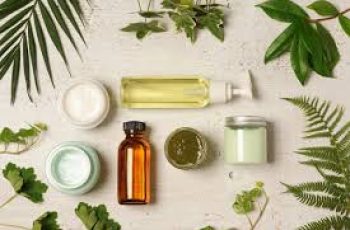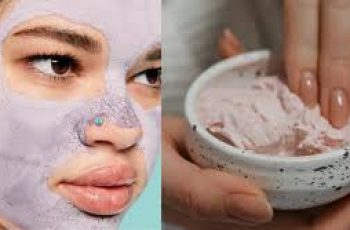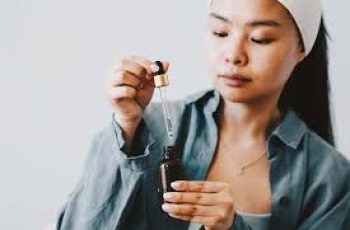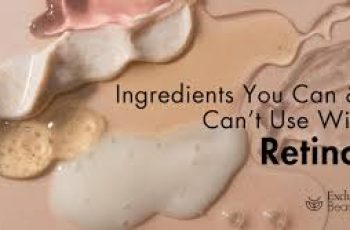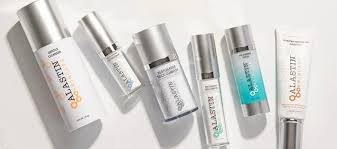
.webp)
.webp)
.webp)
Elastin in Skin: Why It Matters and How to Protect It
.webp)
.webp)
Ever wondered what gives your skin that firm, youthful bounce? The answer lies in a protein called elastin. This powerful compound is key to skin’s stretch, recoil, and firmness.
.webp)
.webp)
.webp)
Elastin allows your skin to stretch and snap back without sagging. It’s part of the elastic fibers in the dermis, the deeper layer of skin. These fibers work like springs to keep your skin tight.
.webp)
.webp)
As you age, elastin naturally declines—and unfortunately, unlike collagen, it doesn’t regenerate easily. That’s why protecting your elastin is critical for long-term skin health.
.webp)
.webp)
.webp)
What Is Elastin and What Does It Do?
.webp)
.webp)
Elastin is a structural protein found mainly in elastic fibers. These fibers are coiled structures that let skin move and return to shape. Think of them like tiny rubber bands under your skin.
.webp)
.webp)
.webp)
Without elastin, your skin wouldn’t have the ability to stretch or bounce back. It would simply sag or wrinkle under pressure. This is why elastin is vital for youthful, toned skin.
.webp)
.webp)
Elastic fibers keep your skin looking resilient, firm, and smooth. Over time, damage to these fibers results in loose or crepey skin, especially in sun-exposed areas.
.webp)
.webp)
.webp)
Elastin vs. Collagen: What’s the Difference?
.webp)
.webp)
Your dermis contains two key proteins—collagen and elastin. While they often work together, they play very different roles in skin health.
.webp)
.webp)
.webp)
Collagen gives skin structure, thickness, and firmness.
.webp)
.webp)
Elastin gives skin its ability to stretch and recoil.
.webp)
.webp)
.webp)
Both proteins are essential, but here’s the difference: collagen can be rebuilt, while elastin mostly cannot. This has big implications for anti-aging treatments.
.webp)
.webp)
So, if your goal is to tighten sagging skin, most treatments will target collagen, not elastin.
.webp)
.webp)
.webp)
How Elastin Functions in the Skin
.webp)
.webp)
Elastic fibers are located throughout the dermis, where they are woven into a network with collagen. These fibers stretch with movement and snap the skin back into place.
.webp)
.webp)
.webp)
This bounce-back effect is what keeps your skin looking toned, youthful, and firm. But as you age, elastin production slows to a near stop, leading to sagging and loss of firmness.
.webp)
.webp)
The decline of elastin is why the skin starts to wrinkle, loosen, or fold. Without a strong support network, gravity and motion begin to take a visible toll on the skin’s texture.
.webp)
.webp)
.webp)
Where Is Elastin Found in the Skin?
.webp)
.webp)
Elastic fibers are arranged throughout the dermis in a complex web to support elasticity in every direction. Two main types of fibers are found here:
.webp)
.webp)
.webp)
Oxytalan fibers are found in the papillary dermis, running perpendicular to the skin’s surface.
.webp)
.webp)
Elaunin fibers are in the reticular dermis, running parallel. These contain both fibrillin and elastin.
.webp)
.webp)
.webp)
This layered system of fibers allows the skin to flex and rebound. Damage to this network leads to permanent sagging, especially in areas like the neck, eyes, and jawline.
.webp)
.webp)
How Elastin Is Made in the Body
.webp)
.webp)
.webp)
Elastin is created through a process called elastogenesis. It begins when fibroblasts (skin cells in the dermis) produce tropoelastin, a soluble form of the protein.
.webp)
.webp)
These tropoelastin molecules attach to microfibrils and form mature elastic fibers. This process happens most actively during infancy and childhood.
After puberty, elastin production declines dramatically. The elastin made during youth is expected to last a lifetime, which is why protecting it becomes so important.
Can You Rebuild Elastin in Skin?
Unfortunately, no. After puberty, the body produces very little new elastin. This means that no creams, lasers, or devices can truly regenerate it.
While many treatments claim to “boost elastin,” these results are often based on misleading tests or temporary improvements in skin elasticity—not actual elastin regrowth.
The only way to improve true skin sagging caused by elastin loss is surgical intervention, such as a facelift or body lift, which removes and tightens loose skin.
What Damages Elastin in the Skin?
Because elastin is so difficult to rebuild, it’s essential to protect it from environmental and lifestyle damage. Here are the biggest threats:
Sun exposure (UV radiation is the #1 cause of elastin damage)
Excessive heat or infrared exposure, Aging and oxidative stress, Pollution and environmental toxins, Smoking, Free radicals
Elastase and MMPs, enzymes that degrade elastin, Rapid weight gain or stretching of skin
Among all these, UV exposure is the most damaging. That’s why consistent use of broad-spectrum sunscreen is the best defense against elastin loss.
How to Protect Elastin in Skin
Since you can’t grow more elastin, the goal is to preserve the elastin you already have. Here’s how to keep your skin’s elastic fibers healthy:
Use broad-spectrum SPF 30 or higher every day, even indoors
Moisturize daily with products rich in antioxidants
Avoid smoking and secondhand smoke
Stay away from fragrance-heavy skincare and harsh exfoliants
Limit sun exposure and wear sun-protective clothing
Eat a diet rich in antioxidants and low in sugar
Maintain a stable weight to avoid skin stretching
Use gentle, non-foaming cleansers
These steps help prevent the enzymes and free radicals that break down elastin in your skin.
The Role of Water in Elastin Function
Elastin fibers depend on water to maintain their flexible, coiled structure. Hydrated elastin stretches and recoils better, making your skin feel more supple.
That’s why hydrating skincare products—especially those with humectants like hyaluronic acid or glycerin—can help improve elasticity, even if they don’t create new elastin.
Moisturized skin is also more resistant to mechanical damage and tearing, which helps keep existing elastin intact.
Can You Increase Elastin with Diet or Supplements?
You can’t directly increase elastin through diet. However, you can support skin health by eating foods rich in amino acids used to build elastin in youth.
These include:
Glycine, valine, proline, and alanine
Found in meat, fish, eggs, dairy, legumes, and whole grains
Though eating these won’t trigger new elastin production, they support overall tissue repair and prevent glycation, which can damage elastin proteins.
High-sugar diets accelerate glycation, a process that stiffens and deforms elastin. Choose low-sugar, antioxidant-rich foods to minimize this.
Why Skincare Brands Claim They Boost Elastin
You’ve probably seen skincare products claiming to “restore” or “boost” elastin. The truth is, adult skin produces virtually no new elastin, so these claims are misleading.
Brands can legally make these claims because they often rely on testing devices that measure skin elasticity or surface changes—not true elastin content.
How Is Elastin Measured in Skin?
There are several methods for assessing elastin levels, but none are perfect:
1. Cutometer
This device uses suction to test how well skin bounces back. But it only measures a small spot, and repeated testing reduces accuracy. Results are easily manipulated.
2. Skin Biopsy with Elastin Stains
Verhoeff’s stain and others can visualize elastic fibers. However, biopsies are invasive and only sample a tiny area. Repeating the test on the same spot is impossible.
3. Laser Scanning Confocal Microscopy
This high-tech method uses fluorescent markers to see the 3D structure of elastic fibers. It offers beautiful images but limited depth and reproducibility.
4. High-Frequency Ultrasound
This tool can detect skin density changes linked to elasticity. But resolution isn’t high enough to see fine elastic fibers clearly.
5. Reviscometer and Dermaflex
These devices use acoustic or suction technologies to measure skin firmness. However, their results vary widely based on technique and skin hydration.
All these methods are either qualitative or technique-sensitive. They don’t offer exact measurements of elastin and are best used with caution.
Key Takeaways: Elastin and Skin Health
Elastin is vital for your skin’s stretch, bounce, and firmness.
It’s produced mostly during infancy and childhood—not in adulthood.
Unlike collagen, elastin cannot be replenished once lost.
Sunscreen, antioxidants, hydration, and healthy living are your best tools to protect it.
No topical product, laser, or device can increase elastin in adult skin.
Be wary of marketing claims that say otherwise.
Final Word: Protect What You’ve Got
Elastin is one of your skin’s most precious resources—and it’s not renewable. Once it’s damaged, the effects are permanent. That’s why prevention is everything.
Wear sunscreen every day, eat well, stay hydrated, and follow a skincare routine with antioxidants and humectants. Focus on protecting your skin—not trying to reverse damage that can’t be undone.
Your elastin is worth guarding. With the right habits, you can maintain your skin’s resilience and youthful bounce for years to come.
